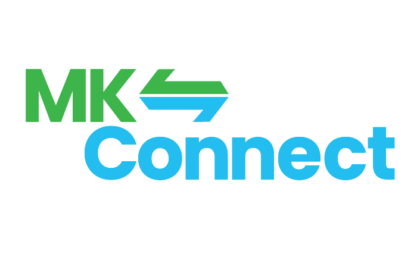Milton Keynes is the first Gigabit City in the UK providing access to next-generation internet connections for local businesses and homes. Along with excellent mobile phone coverage, this makes MK one of the easiest and most obvious places to adopt flexible and agile working practices, hold meetings and conferences or locate a business.
Your Local Broadband
Our lives are more connected every day. In the home, more and more gadgets and appliances work best with a good internet connection. When working from home a good connection can unlock innovative solutions and more flexible working practices. With superfast broadband, everyone within the home is able to do what they want online – all at the same time – without any annoying delays.
The majority of Milton Keynes is now able to benefit from superfast broadband.
Superfast broadband is defined as having a download speed greater than 24 Megabits per second (Mbps). A majority of the city and some other areas of the borough are already covered by Superfast broadband with further upgrades to be made as part of the overall Broadband Development UK programme. The rest of the borough is covered by basic 2Mbps speeds.
You can check your current broadband speed using websites such as speedtest.net. The MKC planning team have put together some FAQs for broadband in MK.
Mobile phone coverage – 3G and 4G
Mobile phone signal across the city is adequate on most networks with Central Milton Keynes having better coverage than outer and rural areas. Most of the network providers (EE, 3, O2, Vodafone etc) have a signal checker available on their website providing signal strength information for 2G/3G and 4G for their customers.
For an independent assessment of indoor and outdoor mobile phone signal, the Which website has an interactive map displaying the OpenSignal app data which is based on billions of real-world measurements.
Tools to keep in touch
With wi-fi signal and a laptop, tablet or other smart device it’s easy to work from anywhere while staying in touch, managing projects, holding meetings and sharing or editing all kinds of documents.
Investing some time getting tech savvy will see quick returns for time management and efficient working. And with thousands of free or cheap productivity apps available to help manage your time and workload, it’s possible to embrace agile working and be more productive than you ever have been.
The choice is vast. Below are some useful ideas, examples and tools to help with remote working. These may not be the best option for you, or suit your needs or budget, but a quick internet search for any of the terms will return literally thousands of articles and reviews to help you find the right solution.
Instant Messaging (IM)
Reduce the clutter of your email inbox and have daily communication over an instant messenger service. An IM app comes installed as standard on smart phones and most tablets and allows instant conversations as well as file sharing, video messaging or ‘group chat’ functions. Skype and Whatsapp are two of the most well-known free apps and both can be installed on desktops so you can send messages using your computer too.
Team Messaging
One step on from IM and better for teams or small businesses, team messaging apps put instant messaging, text messaging and video calls in one collaboration app with some even providing screen sharing. There are a few good free ones such as Ryver, but most of the better and more function packed, like Slack, have a monthly subscription.
Cloud Storage
You can store important or current documents online and access them anytime and anywhere over the internet. Many internet service providers offer a small amount of free online storage to their customers as part of their broadband deal. Other cloud storage providers include iCloud, Google Drive, One Drive and Dropbox, all offering a range of free and paid-for packages depending on the amount of storage you need.
File Sharing
Allowing colleagues and team members to access and edit some or all documents is also a benefit of cloud storage. Some, such as Google Docs even allow more than one person edit a document at the same time. If you want to share documents with a third party and your email has a file size limit, you could use a service such as WeTransfer.
Virtual Meetings
Often called ‘tele-conferencing’ (audio only) or ‘video conferencing’ (video feed) even this technology is evolving. Web conferences, webinars and webcasts, screen-sharing and even allowing people to take control of your desktop remotely, offer a whole range of alternatives to a traditional meeting or training session. Some services are ad-hoc and free, simply requiring group logon and access codes; for larger businesses a paid for service will provide more functions and staff can book a meeting when needed.
Project/Time Management
Sometimes also listed as ‘productivity apps’ these probably have the widest variety of functions of any of the apps we’ve mentioned. Choosing the right app entirely depends on what YOU need and this often requires some trial and error. Fortunately most of them have free ‘lite-versions’ with limited access to some of the more complex functions, but will help you decide whether the basic structure of the app is the right one for you. Trello, Asana, Basecamp and Evernote all suit slightly different needs and at the end of the day, it will be personal choice.
Integration
Of course, to be really productive and make the most of all of this clever technology, integration is the key. Once you can have all your emails, messages, documents, calendars, to-do lists etc all syncing and talking to one another, you’ll have cracked the key to ultimate productivity. That’s why choosing the right software or app, and making sure it has the features you need while linking to everything else is so important and requires some of your own research.


